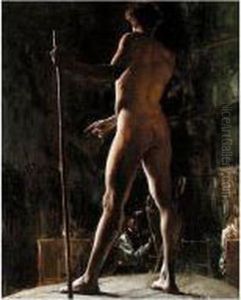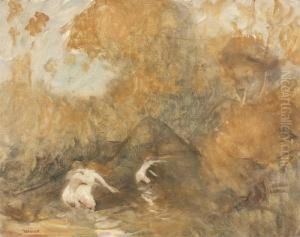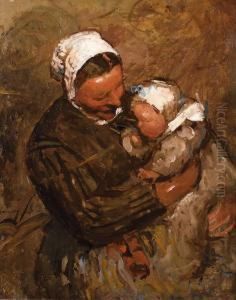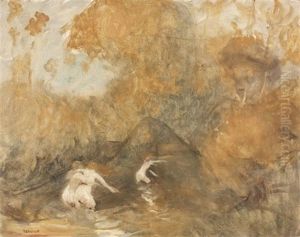Eugene Trigoulet Paintings
Eugène Trigoulet was a French painter born on December 18, 1864, in Rouen, France. He was known for his landscape and genre paintings, which often depicted rural French life and the countryside during the late 19th and early 20th centuries. His work is characterized by its realistic portrayal of light and atmosphere, as well as a certain romanticism in his depiction of pastoral scenes.
Coming from Rouen, a city with a rich artistic heritage and the birthplace of famed impressionist Claude Monet, Trigoulet was likely influenced by the impressionist movement that was gaining momentum during his early years. However, his style remained distinct, often leaning more toward realism than the looser brushstrokes of Impressionism.
Trigoulet studied at the École des Beaux-Arts in Paris, which was the premier art institution in France at the time. There, he would have been exposed to the academic art training that was prevalent in the late 19th century, focusing on drawing, anatomy, and the study of classical sculpture and painting.
Despite his talents, Eugène Trigoulet did not achieve the same level of fame as some of his contemporaries. His works were exhibited at the Salon, the official art exhibition of the Académie des Beaux-Arts in Paris, which was a notable achievement for any artist of the period. Exhibiting at the Salon was essential for artists seeking to establish their reputations in the competitive Parisian art world.
Trigoulet's career spanned a period of great change in the art world, including the rise of impressionism and the beginnings of modern art. While he remained rooted in the traditional techniques and subjects of his training, he also absorbed influences from the changing art scene around him.
Eugène Trigoulet passed away on February 5, 1910, in Paris, leaving behind a body of work that, while not revolutionary, provides a window into the rural life of France and the stylistic transitions of his era. His paintings continue to be appreciated by art historians and collectors for their beauty and historical value.




